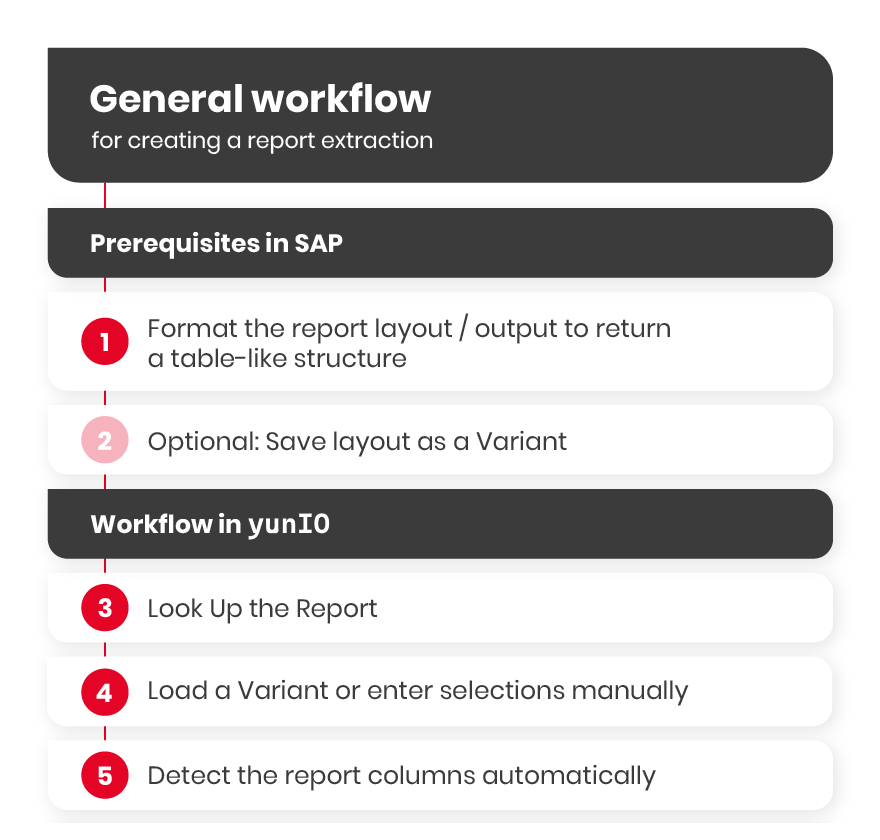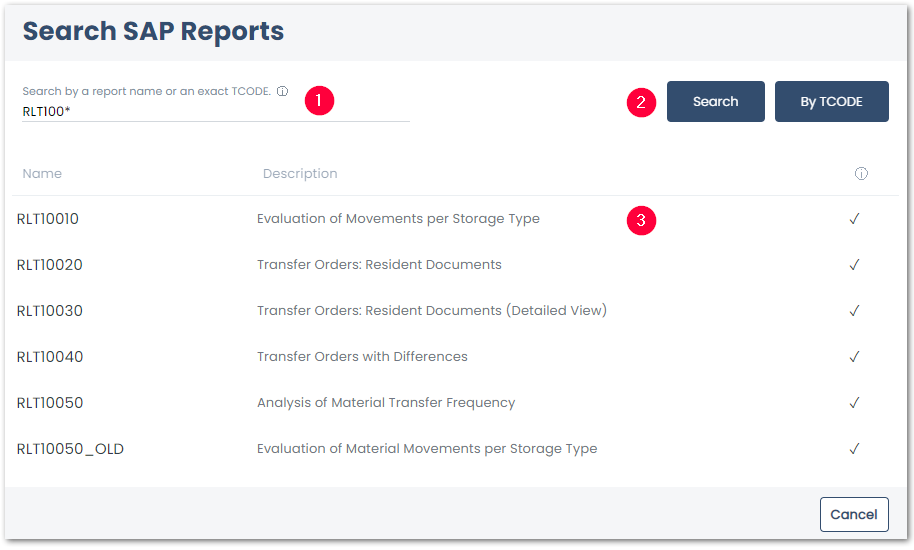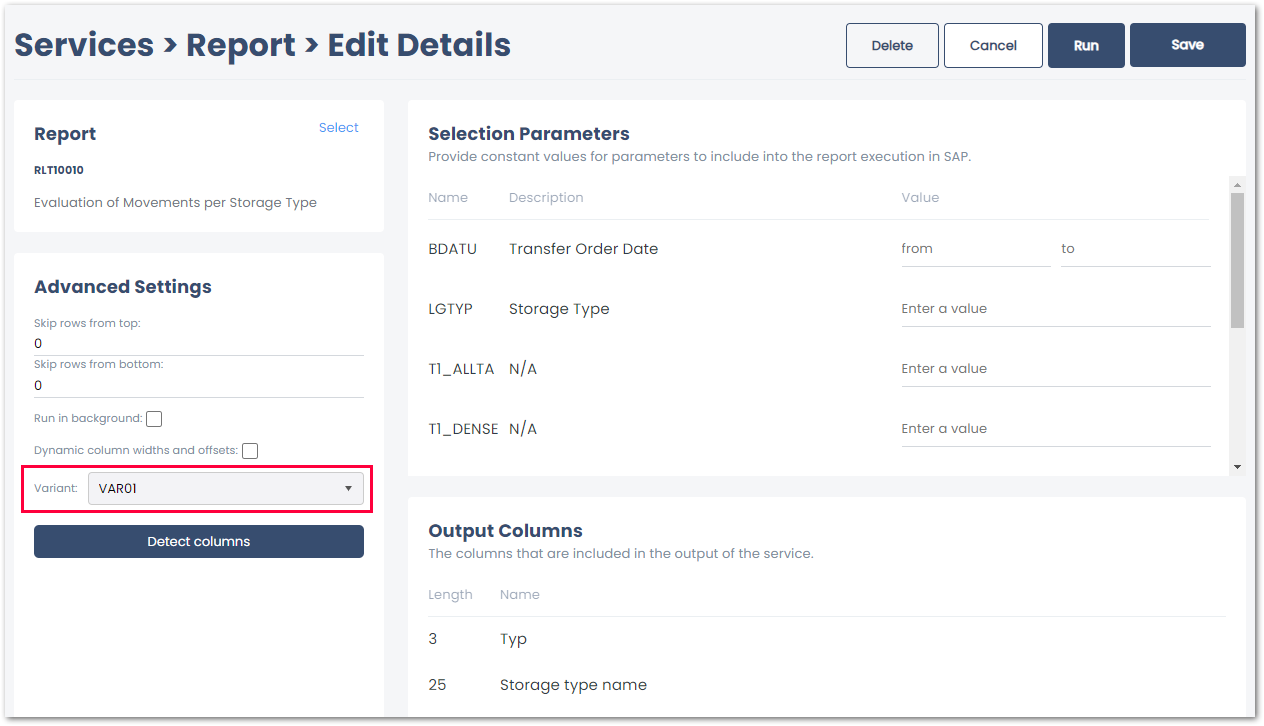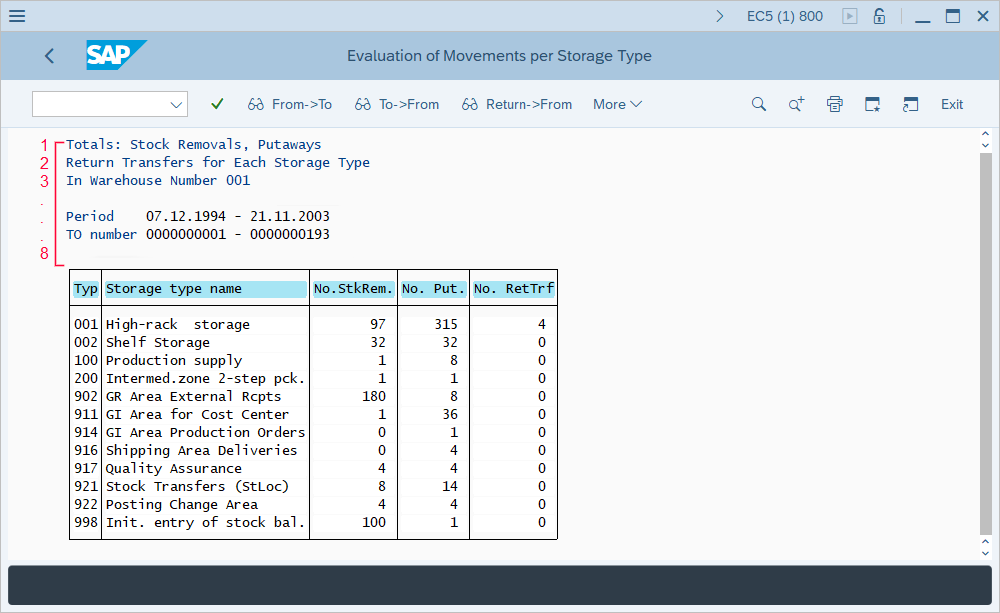Warning: Deprecated documentation
You are using the old version of the online help for yunIO.
Make sure to use the documentation within the new HelpCenter for yunIO.
The following section shows how to use the integration type Report.
The integration type Report extracts data from most frequently used and custom ABAP reports, and SAP transactions.
A report extraction is possible if the report returns a table-like structure in SAP.
Note: The Report component requires installation of the custom function module Z_XTRACT_IS_REMOTE_REPORT in your SAP system.
For more information, see Installation of Z_XTRACT_IS_REMOTE_REPORT.
Warning! Missing Authorization To use Reports in yunIO, access to the designated authority objects (RFC) in SAP must be available. For more information, refer to the knowledge base article SAP User Rights: Report.
General Workflow #
The following graphic shows the general workflow of setting up report services with yunIO:

Look Up a Report #
- Create a new Service of type Report.
- Click [Save and edit]. The Search SAP Reports menu opens.
- Enter the name of a report or the TCODE of a report in the field Search by a report name or an exact TCODE (1). The use of wildcards ( * ) is only supported for report names.

- To look up report names, click [Search] (2). To look up TCODES, click [By TCODE].
- Select a source file from the list of available search results (3).
The extraction settings of Report open automatically.
Settings #
The Report settings consist of the following subsections:
- Report (4) displays the name and description of the selected report.
- Advanced Settings (5) define how the data is extracted from SAP.
- Selection Parameters (6) define input parameters for the yunIO service.
- Output Columns (7) define the output of the yunIO service.

Report #
The Report section displays the name and description of the selected report.
To select a different source file, click Select in the upper right corner of the section.
Advanced Settings #
Run in background
When the checkbox Run in background is activated, the report extraction is executed as a background job in SAP.
Extracting large amounts of data in the foreground mode, may cause timeout errors (“Time limit exceeded”).
To prevent timeout errors, activate the setting Run in background.
Dynamic column width and offset
When the checkbox “Dynamic column width and offset” is activated, the column width and offset are adjusted dynamically at report runtime. Alternative requirement for reports that have varying column widths depending on the report’s selection criteria.
Skip rows from top
Reports can display meta information in the header section of the report, before the actual report body. The setting Skip rows from top allows skipping the meta information.
Enter the number of rows to skip at the beginning of the report.
Skip rows from bottom
Similar to Skip rows from top, the setting Skip rows from bottom allows skipping rows in the footer section of the report.
Enter the number of rows to skip at the end of the report.
Variant
A variant contains a set of selections parameters that limit the result set of the report to records that match the selection.
A selection variant can be created in SAP at the input screen of an ABAP report.
The purpose of a variant is to minimize the necessity to enter selections each time you run a report.
If available, variants can be selected from the drop-down-list.
Note: Manual selections and variants can be combined. Manual selections overwrite any selections in the variant.
Detect Columns
Detecting columns is mandatory for using the service. Click [Detect columns] to execute the report based on the selected variant or selections and detect columns automatically.
Note: If a report has variants, the variant must be selected, before using [Automatically detect columns].
Selection Parameters #
The following section corresponds to the report’s input screen in SAP.
Some selection fields only have a technical name and no description.
To understand which field corresponds to a field in SAP, compare the results with the report’s input screen in SAP.
Click a selection field and press function key [F1] to display the technical name of a selection field.
Note: If a selection parameter is left empty, the report uses the value defined in the report.
Output Columns #
The following section displays the length and names of the detected report columns.
Tip: To manually adjust the length and names of columns, download and edit the service definition of the report service.
Example Service #
The following example shows how to set up a yunIO service that extracts the SAP ABAP report RLT10010 (Evaluation of Movements per Storage Type):
- Create a new service of integration type Report, see Getting Started: Creating a Service.
- Look up the report RLT10010, see Look Up a Report.
- Select a variant or enter selection parameters. The given example uses a variant VAR01.

- Run the report in SAP to determine the number of rows to skip. Set Skip rows from top to 8 to skip the header of the report.

- Click [Detect Columns] to automatically detect the columns of the report. The detected columns are displayed in the section Output Columns.
- Click [Save] to save the service.
- Test the output of the service, see Testing a Service.

SAP Customizing #
The extraction of reports requires the installation of a custom function module in your SAP system.
If you cannot install the function module, turn to your SAP Basis team for help.
Note: As of version 1.2 of the custom function module Z_XTRACT_IS_REMOTE_REPORT access to reports must be explicitly granted, see Authority Objects for Z_XTRACT_IS_REMOTE_REPORT.
Installation of Z_XTRACT_IS_REMOTE_REPORT #
Install the function module using the transport request Z_XTRACT_IS_REMOTE_REPORT-transport.zip.
The transport request is located in the following installation directory:
C:\Program Files\Theobald Software\yunIO\ABAP\Report\Z_XTRACT_IS_REMOTE_REPORT-transport.zip.
The transport request needs to be imported into SAP by your SAP Basis team.
Authority Objects for Z_XTRACT_IS_REMOTE_REPORT #
As of Z_XTRACT_IS_REMOTE_REPORT version 1.2 access to reports must be explicitly granted.
There are 2 ways to verify that the SAP user is allowed to extract a report:
- Use authentication groups, see Authorizing Access to Reports via Authorization Groups.
- Use the custom authorization object Z_TS_PROG.